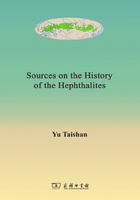
8. Theophylact Simocatta[112], The History[113]
[112] Theophylact Simocatta was an early seventh-century Byzantine historiographer.
[113] The History is Theophylact’s work, which mainly concerned with late sixth-century Byzantine warfare in the Balkans and against Persia.
8.1 [iv. 6. 6-10]
8.1.1 (6) For this Kabades[114] had been the father of Chosroes[115] the former king of Persia; but since he was a murderous man who exercised power violently and converted monarchy into tyranny, the Persians deprived him of office, shut him away in prison, and committed him to be nursed at the bosom of hardship.[116] (7) His wife made frequent and regular visits to him each day, tended him with her ministrations, and by her advice persuaded him to endure with equanimity the acts of unfavourable fortune. (8) Now the commander of the prison, who was an officer and held authority over a company of soldiers, fell in love with the wife; so Kabades, when he heard this, urged his wife to share the governor’s bed and endure every squall of fortune that befell her. (9) When this had happened the watch relaxed, the strict guard was slackened, and vigilance became slave to indolence. Hence Kabades procured a transformation of his troubles, dressed himself in his wifeʼs clothing, and escaped from the prison, leaving behind his wife dressed in his clothes. (10) Then in the company of Seoses, a most trusted friend, he approached the Hun tribes whom history has almost universally recognized as Turks.[117] He was then entertained most hospitably by the king of the Hephthalites and he acquired very considerable forces; he defeated his opponents in battle, returned to the palace, and regained power. (11) And so Kabades measured out for Seoses the recompense for the bond of friendship and decorated him with the most pre-eminent offices, while he savagely exacted punishment from those who had injured him.74
[114] Kabades, i.e., Kavād I.
[115] Chosroes, i.e., Khusrau I.
[116] Regarding these events, see Procopius (I, v-vi).
[117] These Huns were not Türks, but Hephthalites.
8.2 [vii. 7. 6-9]
8.2.1 (6) But since we have made reference to the Scythians[118], both those in the Caucasus and those who face northwards, come then, come, let us interrupt our history and present, like an intercalated narrative, the events which attended these very great nations during these times. (7) When summer had arrived in this particular year, he who is celebrated by the Turks as Chagan in the east[119], dispatched ambassadors to the emperor Maurice;[120] he composed a letter and inscribed in it victory-praises. (8) The letterʼs salutation was as follows, word for word: “To the king of the Romans, the Chagan, the great lord of seven races and master of seven zones of the world”. For this very Chagan had in fact outfought the leader of the nation of the Abdeli[121] (I mean indeed, of the Hephthalites, as they are called), conquered him, and assumed the rule of the nation.[122] (9) Then he was greatly elated at the victory and, making an alliance with Stembischagan[123], he enslaved the Avar nation. But let no one think that we are distorting the history of these times because he supposes that the Avars are those barbarians neighbouring on Europe and Pannonia, and that their arrival was prior to the times of the emperor Maurice.[124]75
[118] Scythians here refers to the barbarians in general.
[119] The Chagan is probably Datou 達頭 (Tardu, r. 576-603).
[120] The military narrative has reached summer 595; however, from the contents of the Chaganʼs letter, it can be calculated that the embassy must have been dispatched at the very start of Mauriceʼs reign [r. 539-602].76
[121] “Abdeli” and “Hephthalites” can be taken as different transcriptions of the same name.
[122] The Hephthalites were defeated in 558, after the Turkish Chagan and Chosroes I (Khusrau I) had joined forces against them. — English translator (no. 33)77
[123] Stembischagan is probably Shidianmi 室點密 (Silzibul, Sizabul, Stembis, Sinǧibū, Istämi, r. ?-576).
[124] Since the Pseudo-Avars fled west in 558 CE, the date when they were destroyed by the Türks should have been in this year or slightly earlier, and according to Theophylact Simocatta, the date when the Türks destroyed the Avars was before they destroyed the Pseudo-Avars; thus the date when they destroyed the Avars was also in this year or slightly earlier. The Türks destroyed the Avars and Ogors, including the Pseudo-Avars, with irresistible force after they destroyed the Hephthalites (Yeda 嚈噠) shortly before 558.78